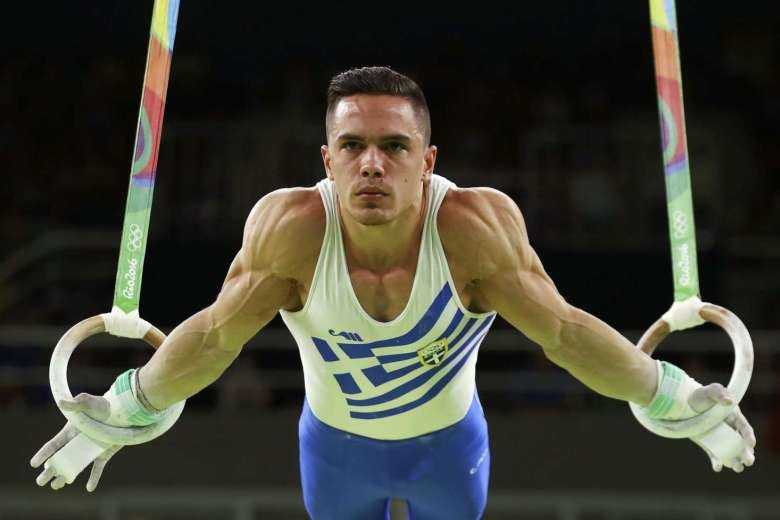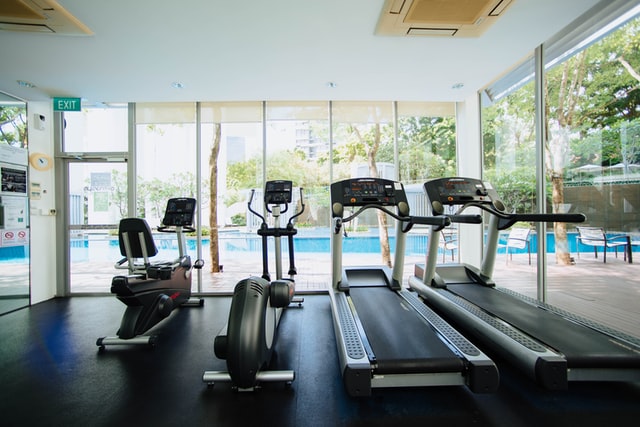We all know that getting stronger leads to increase in performance. But can we increase muscle strength without increasing our body weight?
More the muscle mass a person has, higher the force he/she can produce as they have more mass on the ground to push from. In contact sports your muscle mass is of greater benefit as you have a stronger and wider base to push on the opponent and at the same time you have a better chance to avoid getting knocked off balance.

At the same time bigger guys or guys with greater muscle mass are able to produce greater force because they have a got a bigger platform from which a force is generated.
To become a sportsman, you have to focus on your particular sport and movements related to it (sport-specific training), at the same time addressing all the necessary components of fitness which will help you become an all-round athlete. These components involve weight training (muscular endurance, strength and power), flexibility training, agility, speed, coordination, balance, cardiovascular endurance etc. This is called “Hybrid training”.
“Nick Tuminello” a top strength coach, to describe hybrid training, gives an example of the former world heavyweight boxing champion in the 90s “Evander Holyfield”, who was the first guy to publicize hybrid training. He did boxing practice in the mornings, plyometric and conditioning in the afternoon with world renowned Dr. Fred Hatfield (Dr. Squat, the first man to squat 1000lb+) and did bodybuilding practice with several times Mr. Olympia the legendry Lee Haney.
Extra muscle mass or bodyweight however is not desirable by many sportsmen like boxers, swimmers, endurance athletes, cyclists, MMA fighters, gymnasts etc.
On the other hand, the bodybuilding training is designed so as to maximize muscle gain or induce muscle hypertrophy which is their primary goal. They do so by isolating and training body parts with a variety of rep ranges. The movement is slow and there is hardly any aerobic exercise involved. Apart from that they take huge amount anabolics primarily targeted towards rapid muscle gain.
Sports specific strength training apart from basic bodybuilding movements like squats, deadlifts etc. also include explosive weight lifting movements like snatch, clean and jerk etc. as well as plyometric movements like hurdle jumps, stair running, box jumps etc which require functional coordination of a number of muscles rather than isolation of a particular muscle as in bodybuilding. This, and more, is along with the practice of their sport, or the sport specific training.
Remember that, olympic lifts improve the strength and power component not by majorly increasing muscle mass but by improving neural efficiency. Remember that it is not possible to induce solely neural or only muscular changes. They take place in unison, but there are certain protocols which allow strength increase without much gain in mass. In fact, for a beginner, when they start lifting, the initial strength gains come from neural adaptations, not by hypertrophy.
The body increases strength by increasing number of muscle fibers and by increasing the firing rates of motor neurons. So to increase strength without adding muscle much muscle mass follow the given suggestions:
- Start lifting heavy. Strength athletes focus on lifting there 80-100% 1RM (around 1-4reps). This recruits very high threshold motor units. The muscle fibers used are fast twitch which are primarily strength providers but fatigue very easily.
When we talk about a motor unit, it consists of a motor neuron, and the muscle fibers which are activated by this neuron. The muscle fibers which are activated by the motor neuron, do so based on the signal from the brain, about which muscle is to be contracted, and how much. A motor neuron can activate hundreds of fibers at a time.

Now, this activation of motor neurons is what we call ‘practice’. More practice we do, harder we do, heavier we lift, the more motor neurons you can activate, and in turn more muscle fibers are engaged and thus more force is produced. That’s why trained individuals can activate more motor units than an individual.
A 2004 study, tested the muscle fiber makeup of powerlifters, bodybuilders and weightlifters. They found that, those typically utilising the heaviest loads (> or =90% 1RM), that is weightlifters and powerlifters, exhibited a preferential hypertrophy of type II fibres when compared with body builders who appear to equally hypertrophy both type I and type II fibres. Type II muscle fibres are the ones which are more powerful, and type I are endurance based.
2. Sportsmen concentrate on speed of lifts or explosive lifting which are excellent for building explosive power. Olympic lifts, speed benches and squats, kettlebell swings, heavy medicine ball throws etc. all come under the explosive lift category. On the other hand, adding plyometric movements like box jumps, high knees, hurdles, single leg hops, bounding etc. These movements involve the stretch shortening cycle, which help train the muscles to use the stored elastic energy to produce force.
3. Limit the volume of training. Training for 4-5 sets per exercise with total of 15+ sets for an individual body part for 5-6 times a week is a bit too high a volume. To increase the strength lower the volume. In actual case training frequency with weights should be limited to 2-3 times per week.
4. Avoid training to failure. Failure is achieved, when you work for the pump and the burn, and with minimal rest between sets. Also, when we talk about hypertrophy, there are primarily two types; Sarcoplasmic & Myofibrillar.
Sarcoplasmic hypertrophy refers to an increase in the volume of sarcoplasmic fluid within the muscle cell, with no actual increase in muscular strength. This kind of hypertrophy is what bodybuilders tend to focus on when they are attempting to maximise the overall size of their muscles.
Myofibrillar hypertrophy is the type of hypertrophy you find in strength athletes and those who are strong but may look like they have less muscle mass. It is the increase in size of actual muscle fibres. During myofibrillar hypertrophy, actin and myosin contractile proteins increase in number, adding to your muscular strength, as well as a small increase in physical size.
5. Bodybuilders use less rest periods for muscle hypertrophy. This rest can be app. 60-120sec. However, to gain strength without bulk increase the rest periods between sets. For doing so lift heavy. So, it’s not about increasing rest periods, it’s about first lifting heavier, so that automatically the rest requirements increase.
6. Recruit maximum muscle fibers to increase the amount of force production by the muscles. This is done by concentrating primarily on heavy compound movements.
7. Eat clean & adequate –The amount of food and supplements required for bulking up is phenomenal. For lean muscle gain and gain in strength one needs to eat adequate but eat clean. Start with consuming your maintenance calories, and higher than average protein i.e. over 1.6gm/kg body weight.
Slowly, observe the increase in strength levels. Whenever you hit a plateau, increase the protein intake in form of calorie surplus, by around 200-300 calories, and then observe the difference in strength, making sure that your weight remains the same. In case, the weight increases with surplus, cut down on the overall calories.



